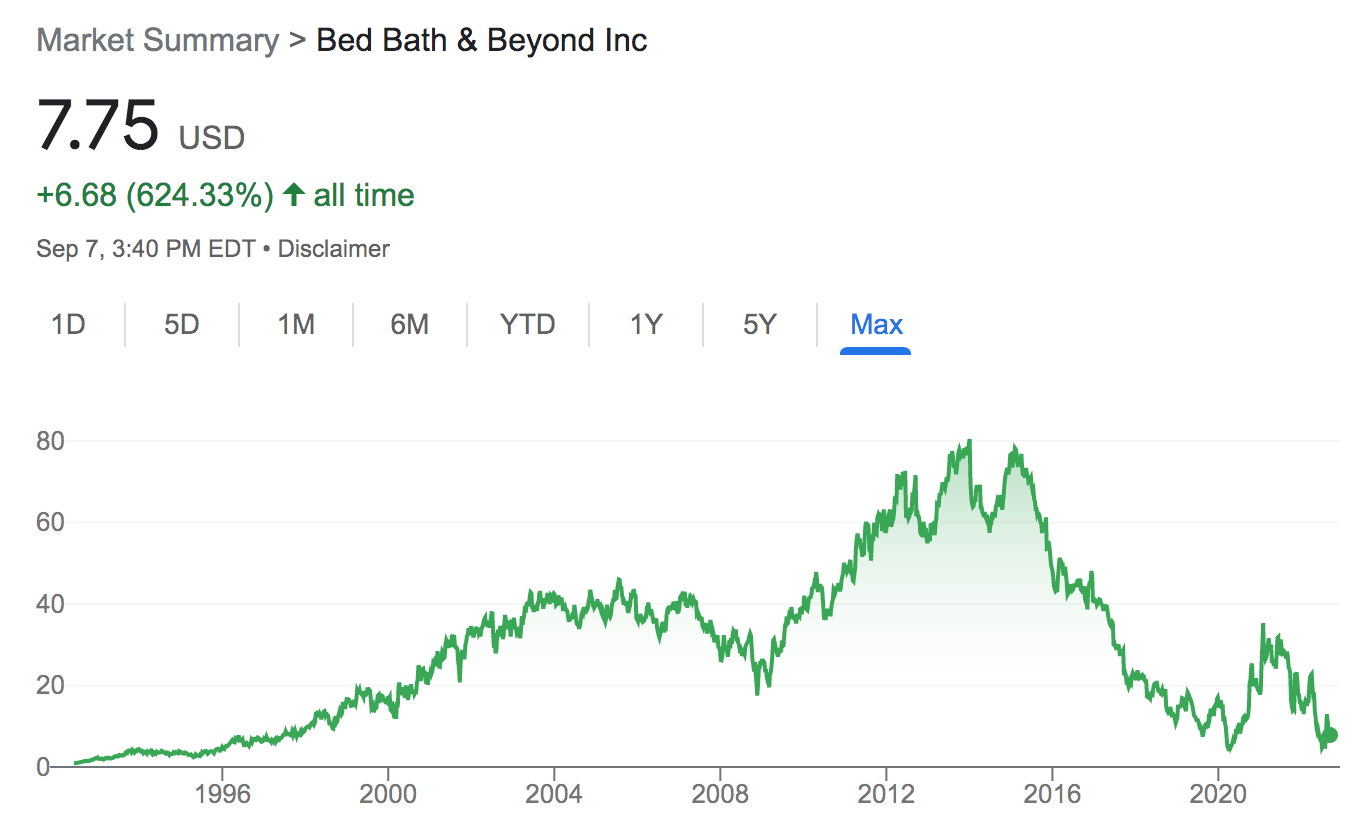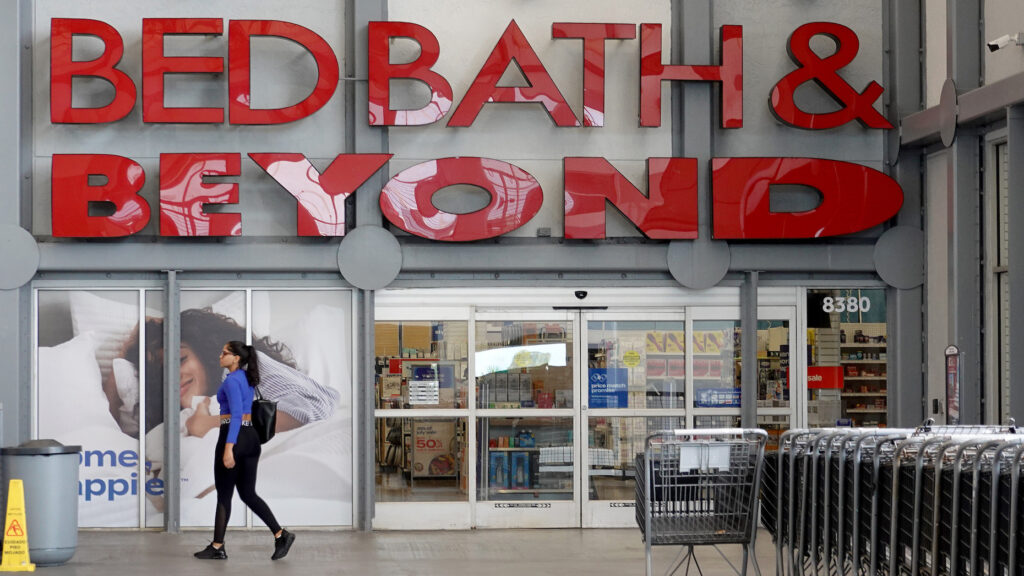With the industry and market moving faster than ever, plan to get together with the best real estate community at our flagship event. Join us at Inman Connect New York, January 24-26, and punch your ticket to the future. Check out these speakers who have just been announced for this unmissable event. Register here.
When Jon Sterling started out as an agent in Chicago two decades ago, he used to meet clients in an unusual place: the coffee shop at his local Bed Bath & Beyond.
Sterling got the idea to meet at the retailer from a seasoned agent in his area, and he said Inman meetings would be held in the room once or twice a week. Part of the appeal was the free parking — a rarity for the neighborhood — but browsing an entire housewares store to get to the cafe also seemed to make customers want to move.
Jon Sterling
“I remember it was a regular hangout,” Sterling said.
Sterling’s experiences capture Bed Bath & Beyond at its best. It was not only a store that had everything a person could want for a home, but it was also ambitious in its abundance. Roaming the islands gave the consumer the power to buy anything, or at least imagine life in a home filled with the finest linens, softest towels, and most modern coffeemakers.
In other words, wandering the islands was an exercise in what could be. Rows of Ninja blenders offered a window into a healthier life of post-workout smoothies. Loads and loads of dining sets weren’t just tools for eating; they promised a social life filled with dinners and evenings with friends. Towers of gauzy curtains heralded the day when you could have a home with high ceilings – at least one place where you, rather than the homeowner, have to choose the window treatment.
For some, Bed Bath & Beyond was also a gateway to adulthood. The college students stopped there on their way to the dormitories. Couples signed up there before their wedding, choosing the blindingly white towels, Belgian waffle irons and bamboo bath mats that would finally make their house a real home.
All that to say, it was a big store for a big country filled with people who had big dreams.
Bed Bath & Beyond is still those things. It still operates hundreds of stores. But in recent years the company has fallen on increasingly difficult times, which finally culminated a few days ago with the announcement of plans to close 150 stores and cut its workforce by around 20%.
This does not mean that the company is going away. Far from there. But the difficulties Bed Bath & Beyond is facing seem to hint that the company is entering a new era of demolition. And with the stock market collapsing, the real estate landscape slowing and record inflation, it looks like a period of abundant prosperity is coming to an end.
How Bed Bath & Beyond Became an Icon
For many years, Bed Bath & Beyond was a reliable player in the big-box retail world – not as big and popular as Target or Walmart, but still nearly ubiquitous in the suburban malls of the 1990s and 2000. However, the company’s origins actually date back to the early 1970s, when a pair of employees at discount retailer Arlan’s broke up to open their own specialty store.
Initially they called the project Bed n’ Bath, but in the mid-1980s they changed the name to Bed Bath & Beyond when they launched a larger hypermarket concept.
The company grew rapidly in the years that followed until, a decade into the 21st century, it operated over 1,000 stores. Along the way, in 1992, it also went public. From the early 1990s until around 2005, Bed Bath & Beyond steadily saw its share price rise. The price fell during the Great Recession, but then rose even more between 2009 and 2014, after which it spent several years in decline. This trend came to an end at the start of the coronavirus pandemic.

Credit: Google
Although Bed Bath & Beyond has always been a specialty store — rather than a generalist like Target — observers have recognized the company as an important pioneer in the rise of big-box retail. And, significantly, it managed for many years to weather the upheavals in the retail space that eventually eliminated other big box companies such as Toys R’ Us, Borders, Circuit City, Mervyn’s and many more. ‘others.
The end of an era
Although Bed Bath & Beyond survived the initial carnage that beat other big-box retailers, the company’s weak inventory performance in recent years suggests that the rise of online shopping – which has far less general than brick-and-mortar retailers – has nonetheless proven difficult.
The problems finally came to a head in 2019, when then-CEO Steven Temares stepped down under intense pressure from activist investors. However, the carnage continued long after Temares left, and in its latest earnings report, Bed Bath & Beyond revealed that sales fell 25% in the second quarter of this year. The company also lost $358 million over the same period, a huge jump from the $51 million lost in the second quarter of 2021.
Amid continued decline, billionaire investor Ryan Cohen bought a 10% stake in the company in March. Cohen’s move helped turn Bed Bath & Beyond into a high-profile “meme stock,” a term applied to companies that attract the attention of high-risk investors who use Reddit to discuss deals. The most famous meme stock is Game Stop, which has seen wild swings in its share price. Cohen is Game Stop’s board director.
Cohen’s investment helped drive the price of Bed Bath & Beyond’s shares up and in August they soared 350%. But they quickly fell apart when Cohen sold his stake in the company.
The turmoil prompted a class action lawsuit over allegations of insider trading. And last week the situation turned deadly when chief financial officer Gustavo Arnal – who, along with Cohen, was named as a defendant in the lawsuit – jumped to his death from his New York apartment.
That’s a lot of news to take in. But the bottom line here is that Bed Bath & Beyond has had an extremely difficult time for years, and the situation has deteriorated significantly over the past few months and weeks. The business does not appear to be closing completely. But there is no doubt that he exists in a diminished state and has a lot of work to do if he is to stem the bleeding.
So far, Bed Bath & Beyond’s strategy to stay alive has been to cut costs and reduce its footprint, but whether that’s enough to stay alive in what increasingly looks like an era remains to be seen. post big box.
At the same time, consumers are struggling on several fronts. Inflation, for example, hit its highest level in over 40 years in 2022, eroding consumers’ purchasing power along the way. The past two years have also seen record home price appreciation, which has been a boon for existing homeowners, but a challenge for people who are just starting to climb the real estate ladder. In addition, rents have reached all-time highs, and mortgage rates and interest rates have declined from historic lows.
The fact is that consumers watching the real estate market are being impacted on several fronts right now. And that makes it harder for some people to walk around the islands of a home retailer imagining a near-endless future of abundance.
A real estate meeting
Whatever happens to Bed Bath & Beyond, it has played an important role in the real estate industry. Besides Sterling’s meetings at the store years ago, Nicole Beauchamp – a New York-based agent with Engel & Völkers – recently told Inman that she regularly uses the retailer both personally and professionally.

Nikki Beauchamp
“I’ve been to Bed Bath & Beyond for years and years and years,” she said. “It’s a great place to always check periodically to see if I could get deals on candles and linens. Things I could use to stage apartments.
The store can be especially helpful when she discovers a customer has an outdated bedspread or shower curtain, Beauchamp explained. Rather than spending time browsing through endless options online, she can go to a physical location and find what she needs right away. And she doesn’t have to worry about shipping issues.
“I could buy it on Amazon or online for less,” she said. “But what if he doesn’t arrive in time?” Or it happens, but the wrong size? If I set foot in the store, I can save myself aggravation.
As a result, Beauchamp was disappointed that Bed Bath & Beyond was in trouble. And she added that when retail stores close, neighborhoods can suffer.
“You want businesses, you want things to be available in the neighborhood where you live and work,” Beauchamp said. “And when it’s not, it definitely changes.”
Email Jim Dalrymple II




